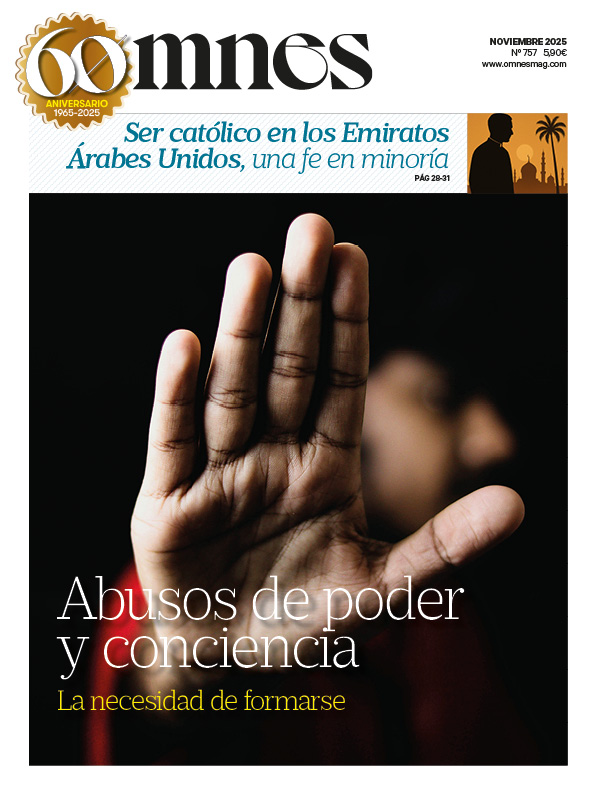Archaeological discoveries in the Holy Land continue to illuminate the historical context of the Scriptures, offering not only material evidence, but also opportunities for deeper theological reflection.
Following the findings of the first half of 2025 -explored in the first part of this article.-The second half of the year brought new treasures in dialogue with the Old and New Testaments. From hydraulic structures of the Davidic monarchy to inscriptions that evoke the Jewish struggles of the second century AD, these advances reinforce the survival of the biblical tradition in the landscape of Israel and Jordan. Below, we highlight the three most relevant discoveries from July to November 2025.
A monumental dam in Jerusalem: Royal engineering at the time of the biblical kings
In August 2025, a team from the Israel Antiquities Authority (IAA), led by archaeologists from the Hebrew University, announced the discovery of a monumental dyke in the heart of Jerusalem, dated to the 8th century B.C., during the reigns of kings Jehoash and Amaziah (9th-8th centuries B.C.).
This imposing structure, over 100 meters long and up to 6 meters high, was part of the city's ancient water system, specifically aligned with the Pool of Siloam. Excavated in the area of the City of David, the dam was built of massive stone blocks and served to channel water from the Gihon spring, protecting the capital from flooding and ensuring supply in times of siege.
The find, revealed by systematic excavations and radiocarbon dating, matches biblical descriptions of the waterworks of Hezekiah (2 Kings 20:20), who prepared Jerusalem against the Assyrian threat, although this dam predates and points to a tradition of royal urban planning dating back to earlier monarchs. As senior archaeologist Ronny Reich explains, «this work demonstrates advanced adaptation to climate change and defensive needs, reflecting the prosperity of the kingdom of Judah.».
This discovery enriches the understanding of monarchical Jerusalem, a key period for the Israelite faith. For biblical scholars, it links directly to passages such as Isaiah 2:9-11, where mention is made of the repair of the wall of the Old City Pond. Symbolically, it evokes the living water spoken of by the prophet, a motif that resonates in the Gospel of John (4:14) and in the Christian tradition as a source of grace.
Byzantine gold treasure at Hippos: Riches of the Christian Decapolis
July and September 2025 brought a double announcement from excavations at Hippos-Sussita, the ancient Decapolis city located in the Golan Hills overlooking the Sea of Galilee. First, in July, Roman gold jewelry (1st-3rd centuries AD) was unearthed, including an exquisite ring and earrings decorated with Hellenistic motifs, witnesses to the opulence of a city that, according to tradition, was visited by Jesus during his ministry in the region of Gadara (Matthew 8:28-34).
Subsequently, in September-October, the Haifa University team uncovered a Byzantine treasure trove: 97 solid gold coins (solidus), jewels with inlaid crosses and a medallion with the image of a local bishop, hidden around 613 A.D. during the Sassanid Persian invasion.
These artifacts, preserved in a ceramic vessel under the floor of a Christian basilica, include pieces up to 1,500 years old, valued at hundreds of thousands of today's dollars. Excavation director Michael Eisenberg describes it as. «a glimpse into the last days of a thriving Christian city, where gold served not only as wealth, but as Eucharistic offerings.». The connection with the New Testament is evident: Hippos was part of the Gentile Decapolis, a cultural mosaic where Jesus performed miracles and preached, illustrating his universal mission (Mark 5:1-20).
This treasure not only illustrates the transition from paganism to Christianity in Galilee, but also shades the context of Jesus' ministry in a Hellenized and wealthy environment. It also recalls the parable of the talents (Matthew 25:14-30).
Aramaic inscription in the cave of Ein Gedi: Lament of the revolt of Bar Kojba
In August 2025, archaeologists from the Hebrew University of Jerusalem, in collaboration with the IAA, announced the discovery of a four-line Aramaic inscription in a cave in the Judean desert near Ein Gedi and overlooking the Dead Sea. Paleographically dated to 132-135 AD, during the Bar Kohba revolt against Rome, the text begins with «Abba of Naburya has perished,» a personal lament possibly written by Jewish rebels hiding in the shelter. Engraved on a stalactite, it measures just 8×3.5 cm and was found together with Roman swords and a coin from the revolt, preserved by the arid climate.
This discovery, unique in its preservation and context, offers an emotional window into post-Temple Jewish resistance, a period of martyrdom that influenced the formation of rabbinic Judaism and, indirectly, early Christianity. As epigrapher Oren Tal notes, «is a human cry in the midst of despair, similar to the psalms of lament.». Although it does not directly quote the Bible, it evokes the exile and the messianic hope of texts such as Daniel 12 or the Dead Sea Scrolls, found in nearby caves. It also echoes the passion of Christ as a model of redemptive suffering (Hebrews 12:2).
Other biblical findings
Wine press in Tel Megiddo (Israel)In November 2025, near the iconic Tel Megiddo - the prophetic Armageddon of Revelation 16:16 - a 5,000-year-old (Copper Age) grape press, the oldest evidence of wine production in Israel, was unearthed. This Canaanite relic, with ritual bowls, illustrates the agricultural roots of the region and evokes wine as a Eucharistic symbol in the New Testament.
Samaritan farm in Samaria (Israel)The site of a 1,600-year-old village linked to the Samaritans, with mosaics and amphorae that allude to their religious syncretism (John 4:1-42), was brought to light in September 2025. It reveals the Jewish-Samaritan coexistence in Byzantine times.
Exhibitions and studiesIn September, the Museum of the Bible exhibited the Tel Dan Stele, the earliest extrabiblical reference to King David (2 Samuel 5), attracting thousands of visitors. In addition, advances in AI have refined dating of Dead Sea fragments, strengthening their link to the Hebrew canon.
Taken together, these finds from the second half of 2025 - the Jerusalem dyke, the Hippos treasure and the Ein Gedi inscription - deepen the dialogue between archaeology and the Bible, nuancing not only historical events, but also themes such as providence, endurance and redemption. As in the first part, the Holy Land continues to speak: a living testimony that invites believers and scholars to rediscover the Scriptures on their ancestral soil.
Doctor of Canon Law








